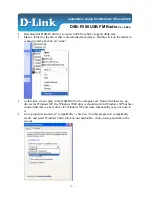
SATELLINE-3AS
User Guide, Version 2.3
33
or even an interference signal caused for example, by a computer or a peripheral device. CD is
also active when the radio modem in question is transmitting.
2) D
Data on channel
CD will switch to active state only after recognition of a valid data transmission. CD will not
react to interference signals.
3) A
Always ON
CD is always in the active state. This option can be used with terminal equipment, which use the
CD-line as an indicator of an active connection (the radio modem can transmit and receive at
any time).
5.2.3 RTS-line
The options for RTS-line are:
1) IIgnored
RTS-line status is ignored.
2) F
Flow control
The radio modem transmits data to the terminal device only when the RTS-line is active. Non-
active state of the RTS-line will force the radio modem to buffer the received data. This option is
used if the terminal device is too slow to handle data received from the radio modem.
3) R
Reception control
RTS-line controls the reception process of the radio modem. An active RTS-line enables
reception (as normal). Non-active RTS-line will interrupt reception process immediately, even if
the radio modem is receiving a data packet. This option is used to force the radio modem into
WAIT State for an immediate channel change.
5.3 Timing and delays during data transmission
When using a radio modem for data transmission, certain delays will be formed through the use
of a radio interface and from the radio modem circuitry itself. These delays exist when the radio
modem switches from
Standby Mode
to
Data Transfer Mode
and during reception and
transmission of data. For detailed delay values in each case see Appendix B.
5.3.1 Data buffering in the radio data modem
Whenever the radio modem is in
Data Transfer Mode
it monitors both the radio channel and the
serial interface. When the terminal device starts data transmission the radio modem switches to
transmission mode. At the beginning of each transmission a synchronisation signal is transmitted
and this signal is detected by the radio modem, which then switches into receive mode. During
the transmission of the synchronisation signal the radio modem buffers data into its memory.
Transmission ends when a pause is detected in the data sent by the terminal device, and after all
















































